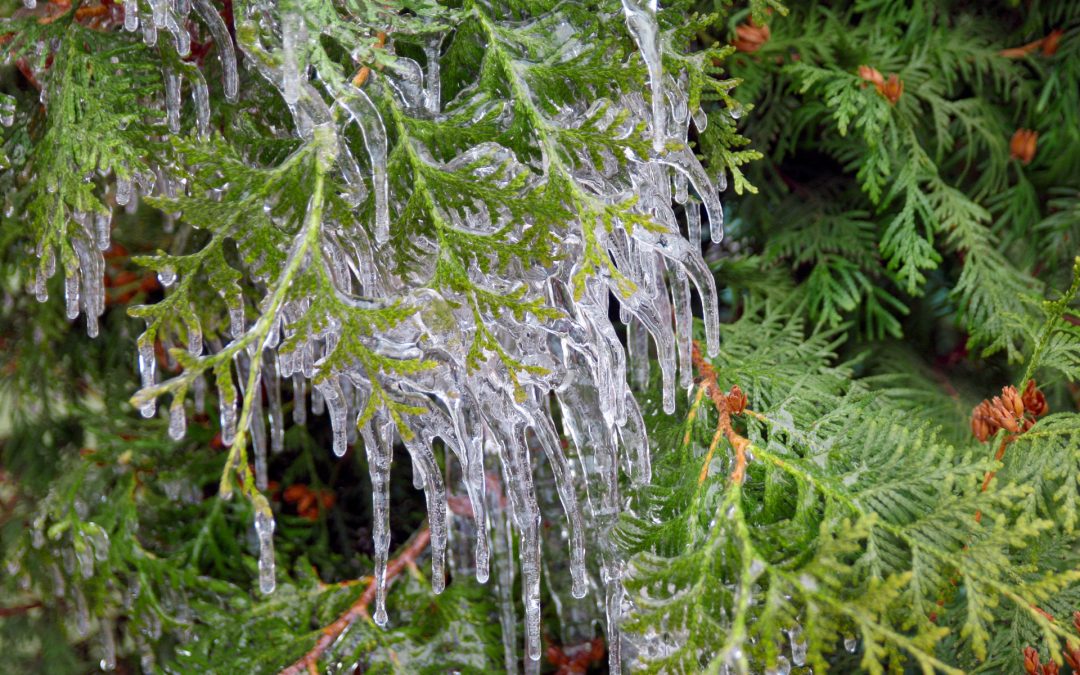Winter brings challenges to urban trees and shrubs, and we won’t discover most of the damage until spring when we venture outside again armed with gloves, rakes and shovels. Fortunately, there is a lot we can do to protect them before snow loads and cold snaps cause problems. As part of our seasonal cycles, trees and shrubs go into a natural dormancy, protecting their root systems and halting new growth that is sensitive to temperature and freezing. Early cold spells though, can damage plant tissue that has not had time to harden off for the winter. Midwinter thaws can break dormancy too early, leaving them vulnerable to refreezing. Along with extreme variations in temperature, deer and other animals browse on foliage and gnaw on their bark, causing scars that weaken them before spring thaws.
Preparing Your Trees and Shrubs for Winter
It is important to build a wind and sun break around softer plants such as rhododendrons and azaleas. Winter winds desiccate plants and sunshine this time of year can burn their foliage. Bamboo and insulating cloth are easy to use and an economical choice for windbreaks. These broad leaf evergreens slow their growth but do not go into full dormancy, so it’s very important to water them if the ground thaws.
How to Protect Fruit Trees
Although winters can be relatively mild in Southwest BC, we’re not immune to cold snaps or extreme winter patterns. Fruit trees (as well as other trees and shrubs) can recover from winter damage to roots, bark and buds, and they can withstand low temperatures provided they winter-off gradually before freezing. More damage can happen if there’s not a lot of snow cover, as snow is a great insulator, and if trees are healthy going into the winter, they are significantly more prepared to survive and recover and continue bearing fruit. What’s important to note, is that year-around tree maintenance keeps your trees healthy and protected. Without snow cover or mulch, seasonal winds can dry the soil excessively and leave root systems open to pathogens on re-thaw. When mulching, use material that decomposes slowly such as composted wood chips or straw. Make sure the mulch does not touch the tree trunk, as this can cause the bark to rot. Call us for an on-site assessment if you detect any problems with your fruit trees.

More tips to protect urban trees and hedges:
- Wrapping your shrubs will keep deer from browsing on them.
- Don’t prune your fruit trees yet, as pruning stimulates new growth and delays dormancy.
- Water your trees and shrubs thoroughly until the ground freezes, making sure the water penetrates the ground to reach the root zone.
- Wrap tall shrubs to prevent snow load damage to branches.
- Once the ground is frozen, apply mulch.
- Protect the bark from gnawing mice and rabbits (and other critters) with wire tree guards.
- If your hedge is exposed to roadways serviced by salt sprays, wrap them in burlap.
Call Us
Call us for recommendations on how we can protect your trees and shrubs through the winter. We cover an extensive service area, including Kamloops [and all the surrounding areas within a two-hour driving radius], Vernon, Shuswap, Chilliwack, Hope, Agassiz, Abbotsford, Mission, Aldergrove and the surrounding area.

